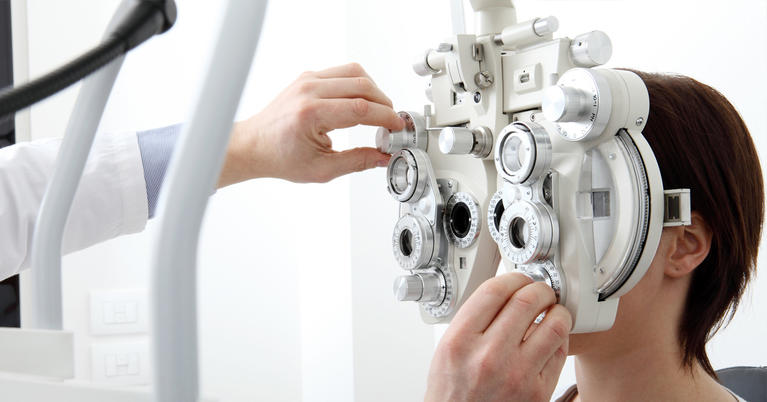The Pros and Cons of Different Refractive Surgeries for Boosted Eyecare

LASIK Surgical Treatment
LASIK surgical procedure is a typically done refractive treatment that aims to remedy vision issues such as farsightedness, astigmatism, and nearsightedness. This surgical strategy has acquired popularity because of its efficiency in giving clients with clearer vision and reducing their reliance on glasses or call lenses. During the procedure, a slim flap is created on the cornea, and a laser is used to reshape the underlying tissue, dealing with the refractive error. The flap is after that rearranged, allowing for fast recovery and very little discomfort for the client.
One of the key benefits of LASIK surgical procedure is the fast enhancement in vision experienced by many people. It is necessary for people considering LASIK surgical procedure to undertake a comprehensive analysis by an eye treatment professional to figure out if they are ideal candidates for the treatment.
PRK Procedure
The PRK procedure, also referred to as Photorefractive Keratectomy, is a kind of refractive surgical procedure that intends to deal with vision concerns comparable to LASIK surgical procedure. Unlike LASIK, which includes producing a flap in the cornea, PRK deals with the surface area layer of the cornea. During the PRK treatment, the external layer of the cornea, called the epithelium, is gotten rid of to enable improving of the underlying corneal tissue with an excimer laser. This reshaping helps to remedy refractive errors such as nearsightedness, farsightedness, and astigmatism.
Among the advantages of PRK over LASIK is that it gets rid of the threat of flap-related problems considering that no flap is developed throughout the surgical procedure. This can be helpful for people with slim corneas or those associated with contact sporting activities where eye trauma is an opportunity. The healing time for PRK is commonly longer compared to LASIK, as the outer layer of the cornea needs time to regrow after the procedure. In spite of the longer recuperation period, PRK can be an appropriate choice for people looking for vision correction surgery.
SMILE Surgical Procedure
A sophisticated refractive surgery technique acquiring popularity in the field of ophthalmology is SMILE Surgery. Small Cut Lenticule Removal (SMILE) is a minimally intrusive treatment that fixes vision by improving the cornea utilizing a femtosecond laser. Unlike traditional LASIK surgical treatment, SMILE Surgical treatment involves producing a small incision in the cornea to extract a lenticule, which leads to much less disturbance to the corneal structure and potentially quicker recuperation times.
One of the primary benefits of SMILE Surgical treatment is its capacity to treat myopia (nearsightedness) and astigmatism with official site high accuracy, bring about outstanding visual results for individuals. The minimally intrusive nature of the procedure additionally lowers the threat of difficulties such as completely dry eye disorder, making it a positive choice for individuals seeking refractive surgery.

LASEK Method
Having checked out the benefits and factors to consider of SMILE Surgical treatment, another notable refractive surgery method worth analyzing is the LASEK Method. LASEK, which means Laser-Assisted Subepithelial Keratectomy, is a kind of laser eye surgery that aims to deal with refractive errors such as myopia (nearsightedness), hyperopia (farsightedness), and astigmatism.
Unlike LASIK, LASEK does not entail creating a corneal flap. Instead, during a LASEK treatment, the cosmetic surgeon uses a diluted alcohol service to loosen the slim outer layer of the cornea, referred to as the epithelium. This layer is then gently relocated apart to permit the laser to improve the underlying corneal cells. When the cornea has been reshaped to the wanted degree, the epithelial layer is repositioned.
One of the main benefits of LASEK is that it can be appropriate for individuals with thin corneas that may not be excellent prospects for LASIK. Furthermore, LASEK generally leads to very little post-operative discomfort and a quicker recovery time contrasted to PRK. Nonetheless, the visual recuperation procedure with LASEK may be a little longer than with LASIK.
Implantable Call Lenses
Implantable Contact Lenses provide a lasting vision improvement remedy for individuals looking for a choice to standard get in touch with lenses or glasses. These lenses, additionally known as phakic intraocular lenses, are operatively put right into the eye to remedy refractive mistakes such as nearsightedness (nearsightedness), hyperopia (farsightedness), and astigmatism. our website andalusia pediatrics. Unlike traditional get in touch with lenses that sit on the surface of the eye, implantable get in touch with lenses function within the eye itself, supplying clear vision without the need for day-to-day maintenance or elimination
Among the key advantages of implantable contact lenses is their durability. When placed, they can stay in the eye forever, using consistent and stable vision adjustment. Additionally, these lenses can be an excellent alternative for people who are not good prospects for laser eye surgical treatment or who like a relatively easy to fix vision modification treatment.
Nevertheless, implantable call lenses do lug some dangers, including the possibility for cataracts or increased eye pressure. It is critical for people considering this choice to talk to an eye care professional to establish if implantable get in touch with lenses are the ideal choice for their particular needs and eye health and wellness.
Conclusion
In conclusion, each type of refractive surgery has its own benefits and disadvantages. LASIK surgical procedure is preferred for its quick recuperation time, while PRK treatment may be appropriate for patients with thin corneas.

Overall, SMILE Surgical treatment presents a promising option for people looking to enhance their vision with refractive surgical procedure.
Comments on “Eye Center in Andalusia: Advanced Vision Treatment Services Available”